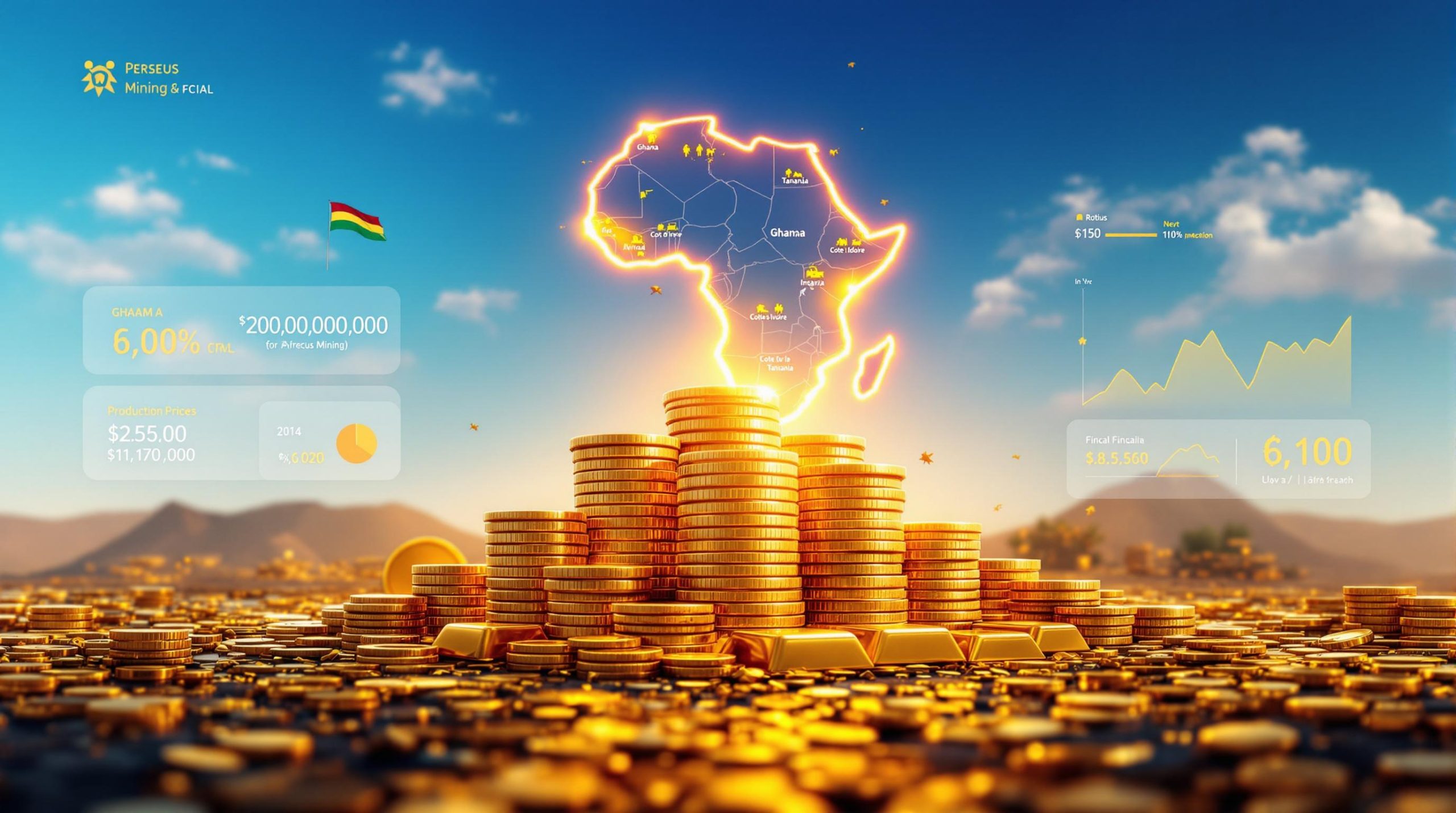The Strategic Importance of Tanzania's Kabanga Nickel Project
The Kabanga Nickel Project stands as one of the world's largest undeveloped nickel sulfide deposits, strategically positioned in northwest Tanzania. This exceptional resource has captured significant attention within the global mining sector due to its remarkable grade quality and substantial reserves of critical battery metals. As global economies accelerate toward electrification and renewable energy technologies, projects like Kabanga have become increasingly valuable for their potential to supply essential materials for the green economy revolution.
With an estimated 18-year mine life and Lifezone's attributable ore production estimated at 43.9 million tonnes, the project represents a significant long-term asset in the global nickel supply chain. The high-grade nature of this deposit makes it particularly attractive compared to lower-grade alternatives that require more intensive processing and higher operational costs.
The strategic importance of Kabanga extends beyond Tanzania's borders, as it represents a critical new source of battery metals investment at a time when supply chain security has become a top priority for manufacturers worldwide. As electric vehicle production continues to accelerate globally, securing reliable sources of high-quality nickel has become a strategic imperative for both automotive and battery manufacturers.
Critical Metals for the Energy Transition
The Kabanga deposit contains a valuable combination of nickel, copper, and cobalt – three metals that play essential roles in the critical minerals energy transition. Nickel is a crucial component in lithium-ion batteries, improving energy density and extending range in electric vehicles. Copper remains fundamental to all electrical systems, while cobalt enhances battery stability and performance.
This trifecta of metals positions Kabanga as a particularly strategic asset in the global push toward decarbonization. The project's development timeline aligns with projected increases in demand for these metals, potentially allowing it to come online during a period of anticipated supply constraints.
How Does Lifezone Metals' $60M Bridge Loan Advance the Project?
Lifezone Metals secures $60m bridge loan for Tanzania nickel project through its wholly-owned subsidiary, Kabanga Nickel Limited (KNL). This financing agreement with Taurus Mining Finance Fund No. 2 represents a strategic interim funding solution designed to maintain project momentum during a critical transition phase between completing the feasibility study and reaching final investment decision.
Chris Showalter, Lifezone Metals CEO, emphasized the significance of this development: "The support from Taurus, a respected and experienced mining finance partner, reflects the strength of our project and our team's ability to deliver."
Understanding the Bridge Loan Structure
The $60 million facility features a carefully structured financial arrangement that balances the company's need for development capital with investor protections:
- 9.25% annual interest rate on drawn amounts
- Quarterly payment schedule
- Standard arrangement and commitment fees
- Maturity date of July 31, 2027, with a potential six-month extension option
- Collateral secured against Lifezone's shares in Kabanga Nickel and other project assets
- Issuance of 2.5 million warrants to Taurus with a five-year expiry at $5.42 per share exercise price
This senior secured bridge loan provides Lifezone with access to capital while allowing the company to progress toward more comprehensive long-term financing solutions. The warrant component gives Taurus potential upside participation in the project's success while providing Lifezone with immediate development capital.
What Will the Funding Enable?
The bridge loan provides essential capital for early works and infrastructure development at the Kabanga site. This funding ensures continuous progress between the recently completed feasibility study and the anticipated final investment decision (FID) expected in mid-2026.
Specifically, the financing allows Lifezone to advance:
- Site preparation activities
- Early infrastructure development
- Engineering design work
- Environmental management systems
- Community engagement initiatives
This early-stage development work is critical for maintaining project momentum and positioning Kabanga for efficient construction once the final investment decision is made. By securing this bridge loan, Lifezone demonstrates its commitment to advancing the project steadily while simultaneously pursuing longer-term funding arrangements with strategic partners.
What Makes the Kabanga Nickel Project Globally Significant?
Resource Quality and Scale
The Kabanga deposit distinguishes itself through several exceptional characteristics that position it among the world's most promising nickel importance & uses development projects:
- Recognized as one of the world's largest development-ready nickel sulfide deposits
- Features high-grade concentrations of nickel, copper, and cobalt
- Estimated 18-year mine life based on current assessments
- Lifezone's attributable ore production estimated at 43.9 million tonnes
- Planned 3.4 million tonnes per annum concentrator capacity
The project's sulfide mineralization offers significant processing advantages compared to laterite deposits, which typically require more energy-intensive and costly processing methods. Sulfide ores generally yield higher recovery rates with lower processing costs, enhancing the project's economic potential.
Strategic Metal Supply for the Energy Transition
Kabanga's significance extends well beyond its impressive geological attributes to its strategic role in global supply chains:
- Provides critical metals required for electric vehicle batteries at a time of rapidly increasing demand
- Offers a substantial new source of nickel outside traditional producing regions like Indonesia and the Philippines
- Represents a significant development in Africa's contribution to battery metal supply chains
- Has potential to influence global nickel market dynamics as production comes online
The project's development coincides with growing concerns about nickel supply concentration in just a few countries, making Kabanga particularly valuable from a supply diversification perspective. As automotive manufacturers seek to secure stable, long-term supplies of battery metals, projects like Kabanga that offer high-quality resources in stable jurisdictions become increasingly attractive.
How Has Lifezone Consolidated Ownership of the Project?
Recent Acquisition Milestones
Lifezone Metals has methodically consolidated its ownership position in the Kabanga project through several strategic transactions that have simplified the project's structure and enhanced its development potential:
- Completed acquisition of BHP Billiton's 17% stake in KNL in July 2025
- Achieved 100% ownership of Kabanga Nickel Limited
- KNL holds 84% interest in Tembo Nickel Corporation Limited (TNCL), the Tanzanian operating company
- The Government of Tanzania maintains a 16% ownership stake in TNCL
This ownership consolidation represents a significant milestone in the project's development journey. By acquiring BHP's minority stake, Lifezone has streamlined decision-making processes and positioned itself to advance the project more efficiently.
As Chris Showalter, Lifezone Metals CEO, noted: "This announcement further demonstrates the preparation and strategic steps Lifezone has taken in anticipation of consolidating 100% ownership of Kabanga Nickel Limited (KNL), which we completed last month."
Strategic Partnership Development
The financing strategy for Kabanga involves coordinated efforts with multiple institutional partners to create a comprehensive funding solution:
- Competitive process underway with Standard Chartered to select additional strategic investment partners
- Project financing process advancing with Société Générale
- Working toward a comprehensive funding solution for full project development
This multi-faceted approach to project financing reflects the substantial capital requirements for developing a world-class nickel project. By engaging both strategic investors and project finance specialists, Lifezone aims to create a funding structure that distributes risk appropriately while ensuring sufficient capital for full project development.
The involvement of major financial institutions like Standard Chartered and Société Générale demonstrates the project's credibility and potential commercial viability. These relationships will be critical as Lifezone works toward its final investment decision in 2026.
What Are the Next Steps for Project Development?
Timeline and Development Roadmap
The Kabanga project is progressing through several critical milestones on its path to becoming a producing nickel mine:
- Feasibility study recently completed, providing detailed technical and economic parameters
- Early works and infrastructure development now commencing with bridge loan funding
- Final Investment Decision (FID) targeted for mid-2026
- Full project financing arrangements being developed in parallel
- Construction timeline to be determined following FID
This methodical approach allows Lifezone to de-risk the project progressively while maintaining development momentum. The recently secured bridge loan plays a crucial role in ensuring continuous progress during the period between feasibility study completion and final investment decision.
Technical Development Focus Areas
With feasibility study completed and bridge financing secured, Lifezone is now focusing on several key technical development areas:
- Site preparation and early infrastructure establishment
- Advancing engineering designs and specifications
- Environmental management systems implementation
- Community engagement and local workforce development
- Supply chain and logistics planning
These early development activities are critical for maintaining project momentum and positioning Kabanga for efficient construction once the final investment decision is made. The bridge loan financing enables Lifezone to advance these initiatives while simultaneously pursuing longer-term funding arrangements.
As Showalter explained: "With the feasibility study now complete, Taurus's funding enables us to advance critical early-stage development while progressing the competitive process under way with Standard Chartered to select additional strategic investment partners."
How Does the Project Fit into Tanzania's Mining Sector?
National Economic Impact
The Kabanga project represents a significant development for Tanzania's mining sector with potential for substantial positive economic impacts:
- Positioned to become a flagship mining operation within the country
- Government participation through 16% ownership ensures national benefit
- Will generate substantial export revenue for Tanzania
- Creates significant employment opportunities for local communities
- Demonstrates Tanzania's potential as a critical minerals producer
For Tanzania, which has been working to enhance the contribution of its mining sector to national development, Kabanga represents a model project that balances international investment with domestic participation. The government's 16% ownership stake ensures the country will benefit directly from the project's success.
Regulatory Framework and Government Relations
The project operates within Tanzania's evolving mining regulatory environment, which has undergone significant changes in recent years:
- Structured to align with Tanzania's mining code requirements
- Government participation through direct ownership stake
- Project development coordinated with relevant Tanzanian authorities
- Represents a model for international investment in Tanzania's mining sector
The partnership structure between Lifezone and the Tanzanian government illustrates how international mining companies can successfully navigate the country's regulatory requirements while developing major projects. This collaborative approach may serve as a template for future resource development in Tanzania.
What Are the Environmental and Social Considerations?
Sustainability Approach
Modern mining industry evolution projects like Kabanga must address comprehensive environmental and social requirements to gain and maintain their social license to operate:
- Environmental impact assessment and management planning
- Water management and conservation strategies
- Energy efficiency and potential renewable energy integration
- Biodiversity protection measures
- Community development initiatives and local employment priorities
The project's development coincides with growing expectations for mining companies to minimize environmental impacts and deliver tangible benefits to host communities. Lifezone's approach will need to incorporate best practices in environmental management and community engagement to meet these expectations.
Particular attention will likely focus on water management given the importance of this resource to local communities and ecosystems. Similarly, the project's energy strategy will be closely scrutinized as mining operations typically require substantial power inputs.
How Does Kabanga Compare to Other Global Nickel Projects?
Competitive Positioning
The Kabanga project's attributes position it favorably among global nickel developments currently under consideration:
- Higher grade than many competing projects, potentially leading to better economics
- Sulfide deposit type offers processing advantages over laterite deposits
- Scale places it among the world's most significant undeveloped nickel resources
- Integrated development approach from mine to refined product enhances value proposition
These advantages may allow Kabanga to achieve lower production costs compared to some competing projects, particularly those based on laterite resources that require more complex and energy-intensive processing methods. The project's scale also provides economies that smaller developments cannot match.
From a strategic perspective, Kabanga's location in Africa represents a geographical diversification away from the current concentration of nickel production in Indonesia, the Philippines, and Russia. This diversification potential adds to the project's appeal for downstream users seeking to minimize supply chain concentration risks.
What Investment Considerations Should Be Noted?
Risk and Opportunity Factors
Potential investors should consider several factors when evaluating the project:
- Development timeline extending several years before production begins
- Capital intensity typical of large-scale mining projects
- Commodity price exposure to nickel, copper, and cobalt markets
- Country risk considerations balanced against resource quality
- Strategic value in battery metals supply chain positioning
Like all major mining developments, Kabanga faces execution risks related to construction, commissioning, and ramp-up to full production. These risks are mitigated somewhat by the involvement of experienced mining finance partners and the project's strong technical fundamentals.
The project's economics will be significantly influenced by future nickel, copper, and cobalt prices, which are subject to market volatility. However, the structural growth in demand for these metals driven by electrification trends provides a supportive long-term outlook.
Disclaimer: Mining project development involves significant risks and uncertainties. Actual outcomes may differ materially from current expectations. Commodity prices, development timelines, capital costs, and operational performance can all vary from projections. Investors should conduct their own due diligence before making investment decisions.
FAQ: Kabanga Nickel Project
What is the current ownership structure of the Kabanga project?
Lifezone Metals owns 100% of Kabanga Nickel Limited, which holds an 84% interest in Tembo Nickel Corporation Limited (TNCL). The Government of Tanzania owns the remaining 16% of TNCL.
When is production expected to begin at Kabanga?
While specific production commencement dates haven't been announced, the Final Investment Decision is targeted for mid-2026, suggesting production would begin several years after that milestone.
What metals will be produced at Kabanga?
The project will produce nickel, copper, and cobalt concentrates from a high-grade magmatic nickel deposits sulfide deposit.
How does this project impact the global nickel supply?
Once operational, Kabanga has the potential to become a significant contributor to global nickel supply, particularly for the growing battery sector, which requires high-quality nickel inputs.
What is the significance of the bridge loan for project development?
The $60 million bridge loan enables Lifezone to maintain development momentum during the critical period between feasibility study completion and final investment decision, advancing early works and infrastructure development.
What makes Kabanga different from other nickel projects?
Kabanga stands out for its high-grade sulfide mineralization, substantial scale, and strategic location. The sulfide nature of the deposit offers processing advantages over laterite deposits that dominate much of global nickel production.
How is the Government of Tanzania involved in the project?
The Government of Tanzania holds a 16% ownership stake in Tembo Nickel Corporation Limited, the operating company for the project. This structure ensures the country benefits directly from the project's development.
Want to Discover the Next Major Mineral Opportunity?
Don't miss out on identifying significant ASX mineral discoveries before the market moves. Visit Discovery Alert's dedicated discoveries page to understand how major mineral discoveries can lead to substantial returns, powered by the proprietary Discovery IQ model that turns complex data into actionable insights.




